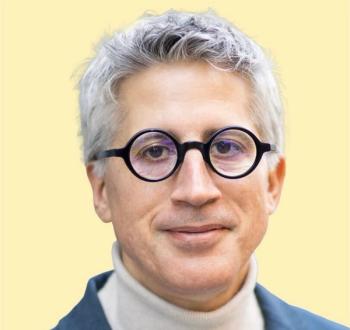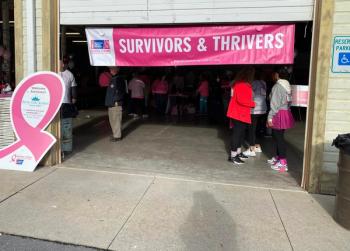
Valley Children’s Hospital sees success in focus on sustainability
The hospital received recognition from the Joint Commission for its efforts. Danielle Barry of Valley Children’s talks about the key ingredients.
In a relatively short time, Valley Children’s Hospital in California has made some impressive strides in its sustainability efforts.
In May,
Danielle Barry, senior vice president and chief operating officer of Valley Children’s, said the Joint Commission’s recognition was a boost for the organization.
“We're very excited to have had the opportunity with the Joint Commission and get to share with them our sustainability journey,” Barry says. “It's a really exciting thing for our team.”
In an interview with Chief Healthcare Executive®, Barry spoke about why sustainability is a necessity for the organization, the development of the program, and offers insights for other hospitals looking to use less energy and reduce their negative impact on the environment. (Watch part of our conversation in this video. The story continues below.)
Wildfires and blackouts
Valley Children’s sustainability program has been driven by the difficulties the organization, and central California, have faced due to climate change.
Wildfires loom as a persistent threat in the region.
Based in Madera, Valley Children’s and the surrounding region are subject to rolling blackouts due to severe heat in the summer.
Temperatures can top 115 degrees for more than two weeks, prompting residents to use air conditioners throughout the day, and Pacific Gas & Electric Co. utilizes rolling blackouts in some areas due to the high demand. Barry, who grew up in central California, is accustomed to occasional summer blackouts in the worst of the heat.
“The center of California, we’re subject to rolling blackouts, as well as California wildfires and a number of things that can put us at the mercy of having our power shut off,” Barry says.
Valley Children’s is building a renewable energy microgrid that is expected to be operational next year. When it’s functioning, Valley Children’s will be reducing its carbon footprint and have its own form of energy independence. Barry says it’s one of the largest energy grids on a healthcare campus.
“We wanted to be sure that we could continue to ensure that we were sustainable, ensure that we didn't have to rely on the power sources and continue to have our services available and the access that these kids need here in the Central Valley,” Barry says.
The board of directors wanted to build more operational resilience in the hospital and signed off on the energy grid.
Valley Children’s also took advantage of tax credits for renewable energy projects in the Inflation Reduction Act.
“Having those tax credits to build our microgrid allows us to have a significant savings in that operational expense, once it's online, and that can be dollars used to put back into the organization to take care of kids,” Barry says. “It's not insignificant dollars for us.”
The vast majority of the children served by the organization are enrolled in Medi-Cal, California’s Medicaid program. So cutting costs on energy is an important business goal for the organization, Barry says.
‘It was the time’
Valley Children’s was one of the hospitals to sign onto
The hospital’s serious efforts on sustainability kicked into high gear in 2022, Barry says.
Valley Children’s was looking to improve its resilience, but the system also recognized it needed to reduce its own harmful effects on the environment.
“In healthcare, we are one of the largest consumers of all things, energy, water, consumables,” she says. “And it's a long journey. And we just felt like it was the time for us to be in that space.”
Valley Children’s goal is to achieve net zero carbon emissions by 2050.
The hospital also formed a “Green Team,” whose members are engaged in efforts to reduce waste.
“They're looking at all the things across the organization in ways that we can be more environmentally sustainable,” Barry says.
The team includes members from across the organization, including clinicians, along with those in business departments, environmental services and other areas. She says the staff working on the green team are very motivated.
“What I love is that it's kind of grassroots and grown from passion, because rather than telling somebody they have to do something, they are out there being the best advocates and really kind of encouraging their colleagues to be involved,” Barry says.
‘It’s very real for us’
Barry says the Joint Commission recognized that Valley Children’s has a genuine commitment to sustainability. “It’s very real for us,” she says.
“We are going to make those improvements right here on our campus with our people … So for me, that's a success component,” Barry says.
Citing Valley Children’s green team, Barry encourages other organizations that want to develop more robust sustainability programs to look for people in their staffs who are concerned about the environment and want to take action.
“Find people who have this as a passion in your teams, because if they have a passion for it, it's interesting to them, they're going to show up, they're going to have great ideas,” Barry says, adding, “Leverage the people on your teams that are closest to the work.”
- Read more:
Most clinicians want hospitals to act on climate change. Some are doing more than others.
Hospital leaders shouldn’t be intimidated by a lack of knowledge in environmental programs, she says. Rather, they should acknowledge what they don’t know and embrace the opportunity to learn.
“Just be curious,” she says. “Don't be afraid to say you don't know something. Some of this stuff is very foreign … And don't be afraid to ask questions that might feel like dumb questions. Just ask the question.”
Barry pointed to the energy and initiative of those at Valley Children’s who have driven the sustainability efforts.
“I'm just very proud of the team who has been involved in this work,” Barry says. “They've done a lot of really great things.”























































































